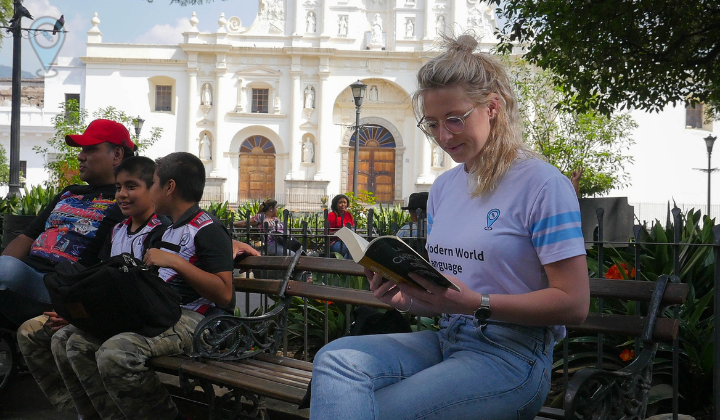
Reading in Spanish will not only help make you feel more confident about your language skills, but it will make you smarter. It’ll expand your vocabulary and help you have a deeper understanding of the language being learnt and your native language.
Besides, there’s also something special about seeing the language written down while admiring the flow and tone of the author. Your brain can make a connection between the meaning of the words and your imagination. This helps new words become more memorable.
Another benefit is that you’ll have lots of time to read sentences over and over again until you get the meaning. Sometimes it’s not so easy when you’re trying to eavesdrop on a conversation on the bus, isn’t it?
Keep in mind these 3 tips when picking up your first Spanish book:
An achievable length:
Don’t aim for “Don Quijote” on your first try. Think about the book-length you usually read in English or shorter.
Level-appropriate:
Ideally, you should understand roughly 70% of the words on the page. If you’re not sure, try reading the first page before you buy the book.
A story that interests you:
If you’re not into the story or subject, it’s very unlikely you’ll read the book through the end. Try to find a story that you like, or you’ll end up frustrated and bored.
And now, we leave you here with the list:
1. First Spanish Reader: A Beginner’s Dual-Language Book (Beginners’ Guides) (English and Spanish Edition)
This one is an excellent introduction to the wonderful world of reading Spanish stories. The tales are presented with the Spanish story on one page and the English translation of the opposite-facing page.
2. “El principito” by Antoine de Saint-Exupéry
“The little prince” in English got to be one of our all-time favorites, and although this book was originally written in French, its simple story and sweet pictures mean that it’s a delight to read in any language.
And, let us tell you an interesting story… In 1938, Antoine de Saint-Exupéry crashed his plane in Guatemala. During his recuperation, he spent some time on Lake Atitlan. There, as the legend goes, he saw the Cerro de Oro, “hill of gold,” that inspired a drawing and scene in El Principito. The hill, sitting at the edge of the beautiful volcanic lake, does resemble an elephant with a boa trailing off at its head and tail as if it were being consumed.
Even if you’ve already read it in English (or another language), you’ll find it useful to read it again in Spanish since you’ll be able to just concentrate on the language and enjoy the familiar story.
3. “El alquimista” by Paulo Coelho
Apart from its spiritual message, this book’s main language benefit is that both the vocabulary and grammar are simple and easy to understand.
4. The “Clásicos Adaptados” Series
This is not actually one single Spanish book, but a collection of them!
The Clásicos Adaptados series features some of the most famous works of Spanish literature adapted for beginner learners, including:Leyendas by Gustavo Adolfo Bécquer
El retablo de las maravillas by Miguel de Cervantes
Tormento by Benito Pérez Galdós
5. El Hombre Del Sombrero by Alexander Lernet-Holenia
All of the other books above are suitable for beginner learners but they do require you to already know some Spanish. El Hombre Del Sombrero, on the other hand, is written so that you can start it now, even if you’ve never learned a word of Spanish before.
So, there you have it! ??
Take your time and try not to worry much about what you don’t understand. The more reading you do, the better your Spanish will become!
Try and make sure this is an enjoyable aspect of your Spanish learning so that you’ll want to come back and do it again.